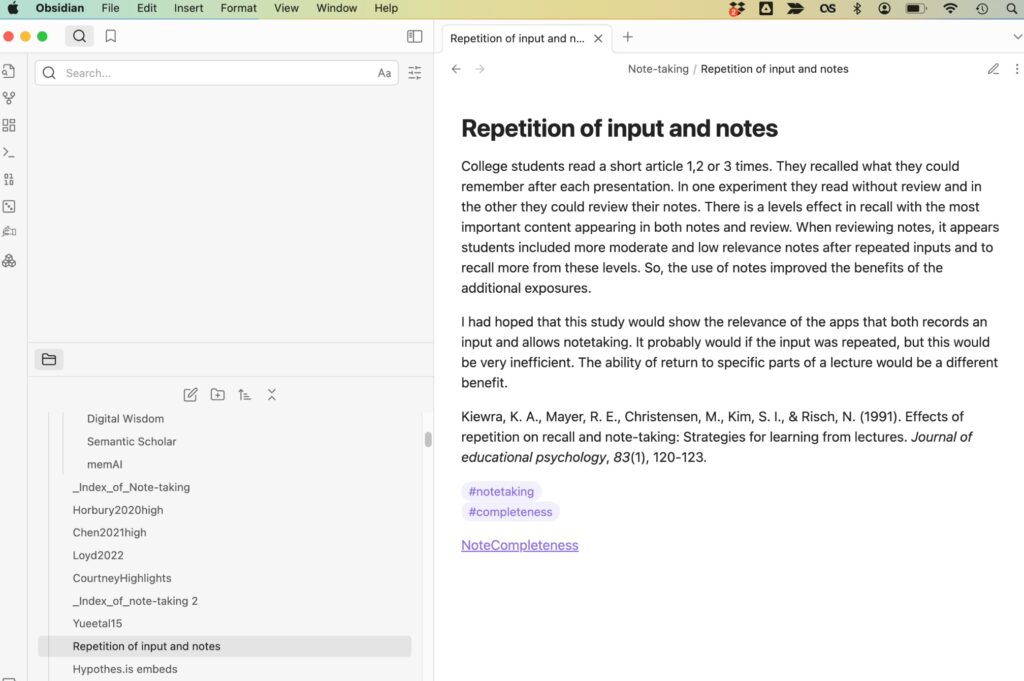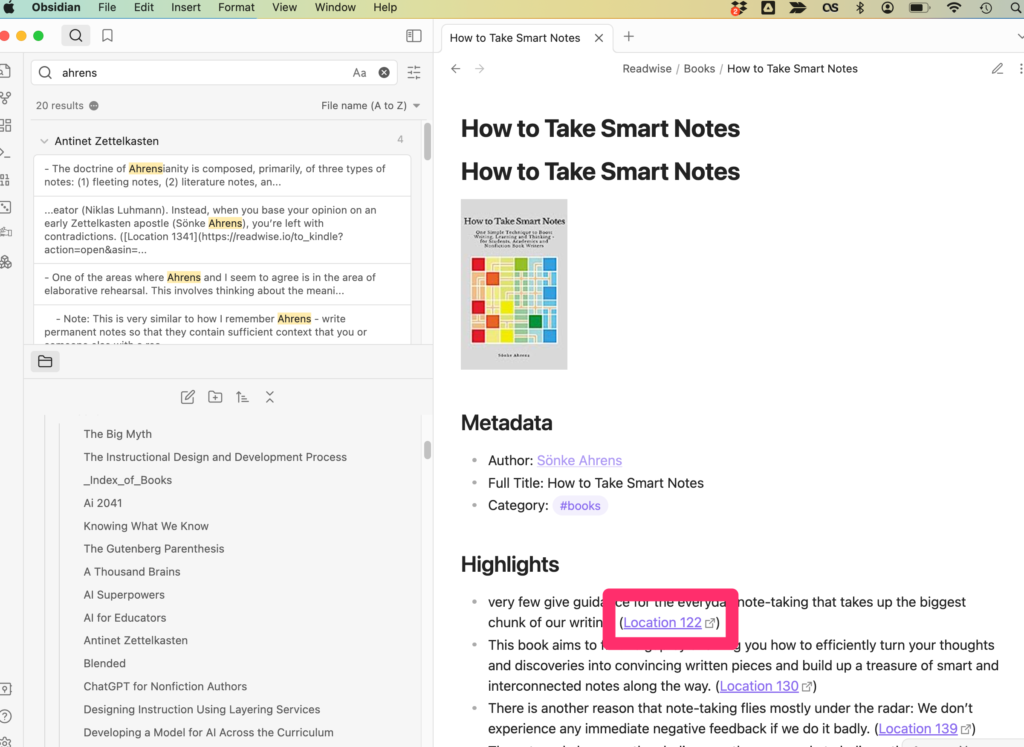
When explaining it helps to have examples both for personal understanding and for communication. My more recent interest in long-term notes has provided a useful example that relates well to my long/term interest in generative activities. This specific collection of note collection activities is convenient because the activities are similar yet illustrate important differences. Notetaking is also an activity most have applied and comments on variations in how the activity can be applied are relatable contributing to my efforts to communicate. My more general goal is to help educators understand the purpose behind the assignments or study suggestions they make.
Generative activities are external tasks learners engage in that encourage productive cognitive behaviors. External tasks to influence thinking activities. Several researchers have identified hierarchies that attempt to explain the benefits of the external tasks and differentiate the less and more powerful activities.
Two examples of hierarchies include the proposals of Chi (2009) and Fiorella and Mayer (2016)
Chi (2009) proposed the SOI framework – selective, organizing, and interactive.
Fiorella and Mayer (2016) proposed a similar ICAP framework (reversed here to show the parallels with Chi) – passive, active, constructive, interactive.
Some further clarification may be necessary. Selective seems self-explanatory. When reading selective is the active process of identifying important material. Constructive, when applied to taking notes, has a specific meaning. It implies the integration of new information with what one already knows. For example, thinking of an example (something you already know) associated with a concept or principle just learned creates a new representation. The learner is putting things together or finding applications. Interactive as defined here is a social process. It could relate to processes such as might be involved in cooperative learning. Both parties or even a larger group combine their individual understandings to create a superior composite.
I am relating these hierarchies to note-taking activities as might be explained by Aherns (2022). This author described notetaking in a little different way than might be assumed to apply in a school or college setting. I like to think of it as taking notes for the long term. This might describe the purpose I have for taking notes. I am not taking notes for an exam in a couple of weeks or at the end of the semester. I am not taking notes to write a paper for my instructor. I am engaging in reading for purposes that might be realized in a few years. I want my notes to be useful when in the future I have a need for the information I understood when the note was created, but may not be remembered when that information would be valuable.
I am extending Aherns a bit here, but a sequence based on his writing might include the following:
- Reading
- Highlighting/ fleeting notes
- Smart note
- Collaborative note
Here are some clarifications of these terms. Reading (or listening) is the lowest stage and involves the exposure to information. Fleeting notes involve the recording of information with little elaboration. Students tend to take this type of notes while listening to a lecture possibly because they must get the information down while the lecturer continues to speak. Highlighting is similar in that it involves selection with little additional processing. Smart notes is Ahern’s term for notes that I remember him describing as providing sufficient context that a note would make sense to me in the future. In other words, this type of note must stand alone as a useful resource. Such notes would also be understandable by others with reasonable background knowledge.
It is important to recognize that learner engagement in generative activities involves potential rather than guaranteed benefits. Roscoe and Chi offer an interesting way of describing potential. They were writing about peer teaching as a generative activity, but the distinction they identify makes sense when applied to other activities. Their distinction is between knowledge telling and knowledge building. If learners are asked to explain a concept to a peer or summarize a concept as a note, they can repeat what they heard or read or they can interpret what they have heard or read in generating an output. Similarly, learners can merge their notes with a peer or they can compare and contrast their notes resulting in deeper processing of the content.
Because most generative activities involve the production of a product, educators can review these products from time to time to evaluate how active learners are being in thinking about what they are learning.
Insights
A few additional comments to consider as a summary. These ideas are interesting and quite concrete. In addition, the analyses are realistic in recognizing that positive results are not automatic.
First, what may seem to be a similar activity may have different consequences as a function of the kind of thinking applied
Second, it is what the student does in completing a generative task that results in learning not just the task assigned.
References
Ahrens, S. (2022). How to take smart notes: One simple technique to boost writing, learning and thinking.
Chi, M. T. (2009). Active?constructive?interactive: A conceptual framework for differentiating learning activities. Topics in cognitive science, 1(1), 73-105.
Fiorella, L., & Mayer, R. E. (2016). Eight ways to promote generative learning. Educational Psychology Review, 28(4), 717-741.
Roscoe, R. D., & Chi, M. T. H. (2007b). Understanding tutor learning: Knowledge-building and knowledge-telling in peer tutors’ explanations and questions. Review of Educational Research, 77, 534–574.
![]()




You must be logged in to post a comment.